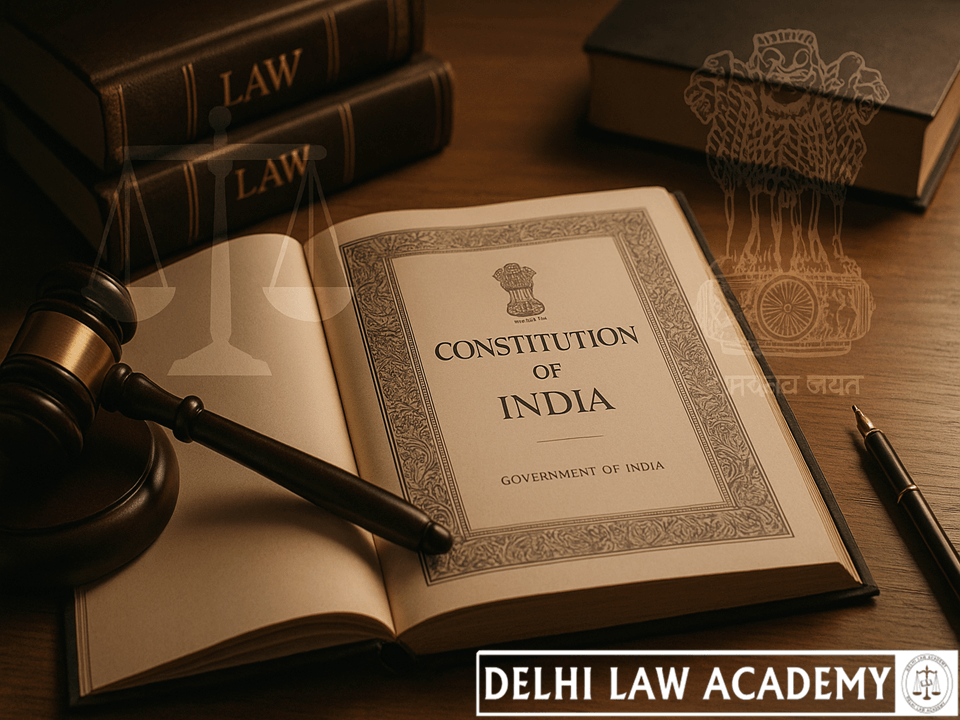
In Re Special Reference No. 1 of 1998 ⚖️ | Supreme Court on Collegium System
Delhi Law Academy Jaipur presents below for aspirants of RJS, DJS, PCS (J) and other Judicial Services throughout India a summarized version of the Supreme Court judgment in the case of In Re Special Reference No. 1 of 1998 interpreting the Constitutional provisions contained in Article 124(2) relating to Appointment of Supreme Court Judges.
📝 TOPICS
- Appointment of Supreme Court Judges
- Appointment of High Court Judges
- Transfer of High Court Judges
✅ Appointment of Supreme Court Judges
The opinion of the Chief Justice of India which has primacy in the matter of recommendations for appointment to the Supreme Court has to be formed in consultation with a collegium of Judges.
Having regard to the terms of Article 124(2), we think it is desirable that the collegium should consist of the Chief Justice of India and the four seniormost puisne Judges of the Supreme Court.
- Necessarily, the opinion of all members of the collegium in respect of each recommendation should be in writing.
- The ascertainment of the views of the seniormost Supreme Court Judges who hail from the High Courts from where the persons to be recommended come must also be in writing.
These must be conveyed by the Chief Justice of India to the Government of India along with the recommendation.
It is, we think, reasonable to expect that the collegium would make its recommendations based on a consensus.
If even two Judges express strong adverse views for good reasons, the CJI would not press the appointment.
✅ Appointment of High Court Judges
The Chief Justice of India should form his opinion in consultation with his seniormost puisne Judges.
- The opinion of the Chief Justice of the High Court would be entitled to the greatest weight.
- Views of other Judges of the High Court and Supreme Court Judges conversant with that High Court must also be considered.
Collegium for High Court appointments:
Chief Justice of India + two seniormost puisne Judges
✅ Judicial Review
- Judicial review is available if the recommendation is not the result of consultation between CJI and his seniormost colleagues.
- Review is available if crucial views from concerned senior Judges were not considered.
- Review is also available if the appointee lacks eligibility.
✅ Transfer of High Court Judges
- CJI must obtain views of Chief Justices of both High Courts involved.
- These views must be in writing.
- Collegium for transfers: CJI + four seniormost puisne Judges.
✅ Answers to the Reference
- Consultation means plurality — not the individual opinion of CJI alone.
- Supreme Court: CJI + four seniormost puisne Judges.
- High Court: CJI + two seniormost puisne Judges.
- Recommendations not following the required process are not binding on the Government.
📘 Stay Ahead with Delhi Law Academy!
Get access to free monthly current affairs, read our insightful blogs,
and explore free study resources prepared by experts at DLA Jaipur. 🚀
Frequently Asked Questions (FAQs)
fixing the **collegium structure** for SC appointments (CJI + 4 seniormost Judges) and HC appointments (CJI + 2 seniormost Judges).
It is the foundation of the **modern judicial appointment system** in India.
• Chief Justice of India
• Four seniormost puisne Judges
These five together decide SC judge appointments and transfers.
• Chief Justice of India
• Two seniormost puisne Judges of the Supreme Court
This 3-member collegium evaluates recommendations, HC Chief Justice views, and senior HC judge inputs.
• CJI + 4 seniormost SC Judges (same as SC collegium)
• Written views of both High Court Chief Justices involved
• All opinions sent to the Govt of India
This ensures neutrality and avoids local influence or bias.
• Collegium *procedure* wasn’t followed
• Mandatory written views weren’t obtained
• Eligibility requirements were violated
Courts cannot review **merit-based choices**, only procedural lapses.
**that candidate will NOT be appointed.**
Even two judges giving strong written objections normally prevents an appointment.
Consensus is preferred, but **majority controls**.
Contact us
📍 Delhi Law Academy – Jaipur Branch
6C, Tower 2, Coaching Hub, Pratap Nagar, Jaipur – 302033
📞 Phone:
+91 9911916552
+91 8447285606
✉️ Email:
contactus@delhilawacademy.com

